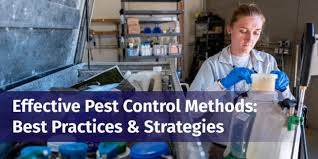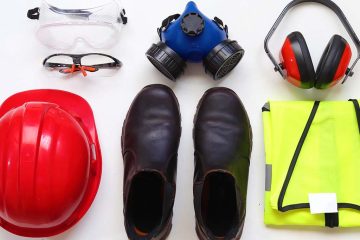Pest control is an essential aspect of maintaining a healthy and safe environment. Effective pest control methods ensure that homes, businesses, and agricultural sites remain free from harmful pests that can cause significant damage and pose health risks. This article explores the best practices and strategies for effective pest control.
Understanding Pest Control
Pest control involves managing and eliminating unwanted creatures such as insects, rodents, and other pests. These pests can cause structural damage, contaminate food, and spread diseases. The goal of pest control is not only to eliminate the pests but also to prevent their recurrence.
Integrated Pest Management (IPM)
Integrated Pest Management (IPM) is a comprehensive approach that combines different methods to control pests in the most effective and environmentally friendly way. IPM emphasizes prevention, monitoring, and control. It uses a combination of biological, cultural, physical, and chemical methods to manage pest populations.
Biological Control
Biological control involves using natural predators, parasites, or pathogens to control pest populations. This method is environmentally friendly and can be highly effective. For example, ladybugs are used to control aphid populations, while certain bacteria can be used to target mosquito larvae. Biological control reduces the need for chemical pesticides and promotes ecological balance.
Cultural Control
Cultural control involves altering the environment to make it less conducive to pest infestation. This can include practices such as crop rotation, planting pest-resistant crop varieties, and maintaining proper sanitation. By making the environment less hospitable for pests, cultural control can significantly reduce pest problems.
Physical Control
Physical control methods involve using physical barriers, traps, and other mechanical means to prevent pests from entering an area or to remove them from it. Examples include installing screens on windows to keep insects out, using traps to capture rodents, and employing heat or cold treatments to kill pests. Physical control is often used in combination with other methods for maximum effectiveness.
Chemical Control
Chemical control involves the use of pesticides to manage pest populations. While chemical control can be highly effective, it must be used with caution to avoid harm to humans, animals, and the environment. The key to successful chemical control is selecting the right pesticide and applying it correctly. It’s also important to use chemicals as a last resort and in conjunction with other pest control methods.
Best Practices for Effective Pest Control
Implementing effective pest control requires a strategic approach. Here are some best practices:
Regular Inspections
Regular inspections are crucial for early detection of pest problems. Conducting routine checks allows for the identification of potential pest entry points and infestations before they become significant issues.
Proper Waste Management
Proper waste management is essential in reducing pest attraction. Ensure that garbage is stored in sealed containers and disposed of regularly. Compost piles should be managed correctly to avoid attracting pests.
Environmental Modifications
Modifying the environment to deter pests is a key strategy. This can include sealing cracks and crevices, repairing leaks, and removing standing water. By eliminating potential food, water, and shelter sources, the likelihood of pest infestations can be greatly reduced.
Education and Training
Educating and training staff and residents about pest prevention and control measures is vital. Awareness programs can help individuals recognize early signs of infestations and take appropriate actions to prevent and control pest problems.
Strategies for Pest Treatment
When dealing with an existing pest infestation, a combination of strategies may be necessary for effective pest treatment. This involves identifying the pest, determining the extent of the infestation, and selecting the appropriate control methods.
Monitoring and Evaluation
After implementing pest control measures, ongoing monitoring and evaluation are essential. This helps to assess the effectiveness of the control methods and make necessary adjustments. Regular monitoring ensures that any new pest problems are detected early and managed promptly.
Conclusion
Effective pest control is a multifaceted process that requires a combination of methods and strategies. By understanding and implementing best practices such as IPM, biological, cultural, physical, and chemical controls, and adhering to proper pest treatment protocols, we can achieve sustainable and effective pest management. Continuous monitoring and education are key to maintaining a pest-free environment, ensuring health and safety for all.




